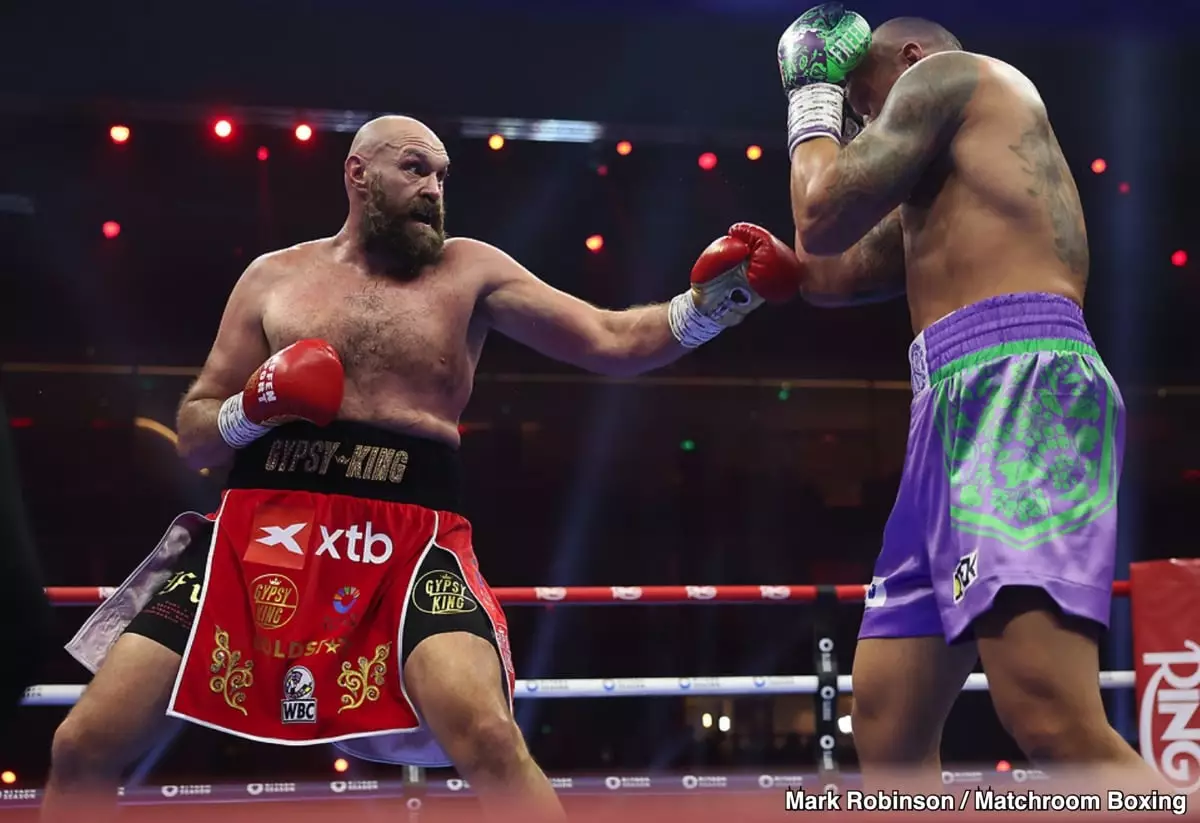The recent rematch between Tyson Fury and Oleksandr Usyk ignited discussions among boxing fans and analysts, drawing varied opinions on the nature of the bout and its ultimate outcome. Frank Warren, a significant figure in the boxing world, re-evaluated the fight and suggested that although it was closer than he’d originally perceived, he still firmly believed his fighter, Fury, deserved the victory. This article delves into the fight’s dynamics, the implications of judging in boxing, and the prevailing narratives surrounding Fury’s performance.
Tyson Fury’s record, now standing at 34 wins, 2 losses, and 1 draw, with 24 knockouts, does not tell the complete story of his latest bout against Usyk. The complexity of their exchanges revealed a boxing match where Fury, despite his size and power, struggled to assert control. Usyk, with his impeccable technique and speed, dominated the latter portion of the fight, leading to a unanimous decision in his favor, with all three judges scoring the fight 116-112.
Fury’s failure to adhere to the tactics laid out by his trainer, SugarHill Steward, played a pivotal role in the bout. The instruction to stay aggressive and prevent Usyk from gaining momentum fell by the wayside as Fury retreated when caught with Usyk’s sharp body shots. This pattern had been consistent in their previous encounters, highlighting an area of vulnerability for Fury: his response under pressure. The championship rounds lacked the necessary urgency from Fury, leading to an impression of complacency rather than a fighter desperate for victory.
The role of judges in boxing, while crucial, is often contentious. Joe Public, as well as boxing insiders like Warren, have raised eyebrows regarding the judges’ decision-making processes. With Fury seemingly on the defensive, many spectators felt that Usyk’s tactical prowess warranted a clearer victory. Warren’s assertion that a knowledgeable judge could have awarded one of the final rounds to Fury raises questions about the criteria used in scorekeeping.
Boxing judges are expected to apply a consistent standard of evaluation, but their perspectives can vary greatly. Factors such as aggression, effective punching, and ring control each have importance in determining the outcome—but they can also lead to disputes. In this instance, the judges recognized Usyk’s ability to outmaneuver and outland Fury during critical moments, while Warren and a few others expressed disbelief in the unanimous nature of the decision.
SugarHill Steward, known for his successful training methods, faced scrutiny in the wake of Fury’s loss. The inadequacy in communicating the dire circumstances of the fight to Fury is a significant aspect of their strategy. A coach’s role transcends skill development; they must also galvanize their fighters into action during pivotal moments. By failing to elevate the urgency in Fury’s mindset, Steward might have unintentionally contributed to a fight plan that faltered as the rounds progressed.
Trainers must adapt to the flow of the fight, knowing when to motivate and when to provide sobering realities. This misjudgment by Steward speaks to the fine line between strategy and emotional conditioning. Had Fury been made aware of his precarious position more emphatically, his tactical approach might have shifted dramatically in those final rounds.
In the aftermath of the Fury vs. Usyk encounter, the discussions highlight not just a split in fan opinions but a broader examination of what constitutes an effective strategy in boxing. Fury’s hopes of reclaiming dominance in the heavyweight division now rest on reassessing his approach—both in and out of the ring. For Usyk, the victory solidifies his position as a champion but also presents the challenge of facing new contenders eager to dethrone him.
As both fighters move forward, the implications of this bout extend beyond personal victories, offering critical lessons about strategy, resilience, and the ever-important role of effective communication in the boxing world. While debates among fans and analysts will continue, the outcomes of such high-stakes matches ultimately shape the future trajectory of the heavyweight landscape.


Leave a Reply